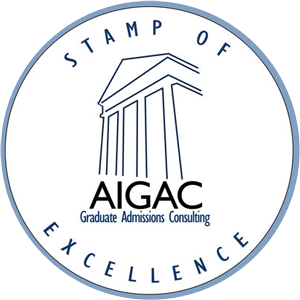Does the opportunity to discover something new excite you? Have you ever wanted to “be the expert” on a topic, advance knowledge in a particular field, or become a college professor? If so, pursuing a PhD may be the right next step for you. While daunting, we are breaking down the process of applying to PhD programs into four easy steps.
Step 1: Know Yourself and Make a List
Before starting the rigorous pathway towards becoming a PhD, ask yourself if your long-term career goals can be accomplished with a Master’s Degree rather than a PhD. A Master’s degree can be completed in a shorter period of time (i.e. less debt!) and can offer substantial scheduling flexibility for those who want to maintain a full-time job while in school. We recently covered a few factors to help you decide whether a PhD or Master’s program is right for you.
Once you have committed to pursuing a PhD, consider the following questions when researching programs:
- Do you want to attend the top PhD program in your field?
- Are there specific researchers you would like to work with?
- Is there a particular region of the country you would like to live in?
- Which programs offer scholarships and financial aid?
Step 2: Review Admissions Requirements and Deadlines
Requirements differ based on the graduate school and field of study. However, most programs require school transcripts, standardized test scores (most often the GRE), 2-3 letters of recommendation, a curriculum vitae (CV) and essays. Use application deadlines, including scholarship applications and financial aid deadlines, to create a realistic timeline for tasks. Remember to provide recommenders with ample time to complete and submit letters.
Step 3: Prepare Application Materials
In addition to transcripts, standardized test scores, and letters of recommendation, PhD programs often require a CV, personal statement, and research proposal. A CV is an academic summary of your experiences, including degrees, research experiences, publications, presentations, awards, and professional societies. The personal statement is a narrative essay detailing your personal experiences and how they have led you to pursue a career in academia. Finally, the research proposal discusses the research question you would like to pursue in graduate school, including relevant background, methods, and statistical analysis. Programs will sometimes combine these two essay prompts into the “Statement of Purpose” essay.
Step 4: Submit Application
You have put in the hard work; now it’s time to relax! Budget a full week prior to the application deadline to review all materials, paying close attention to spelling and grammatical mistakes. When you’re ready, submit your materials to the programs’ online portals. Remember that submitting materials generally takes at least a half hour for each program. Don’t put this off until the last minute! Earning a PhD offers students the intellectual freedom to explore unanswered questions, the knowledge and expertise to tackle the world’s most challenging problems, and the opportunity to develop a skill set that is both highly marketable and broadly applicable. If you are looking for additional guidance on your PhD applications, The Art of Applying® is here to help. Our dedicated team of consultants is here to help you develop your personal statement, CV, and make sure you have the strategy to get strong letters of recommendation.
To learn more about how we can help, schedule your 15-minute Quick Call.



Leave a Reply